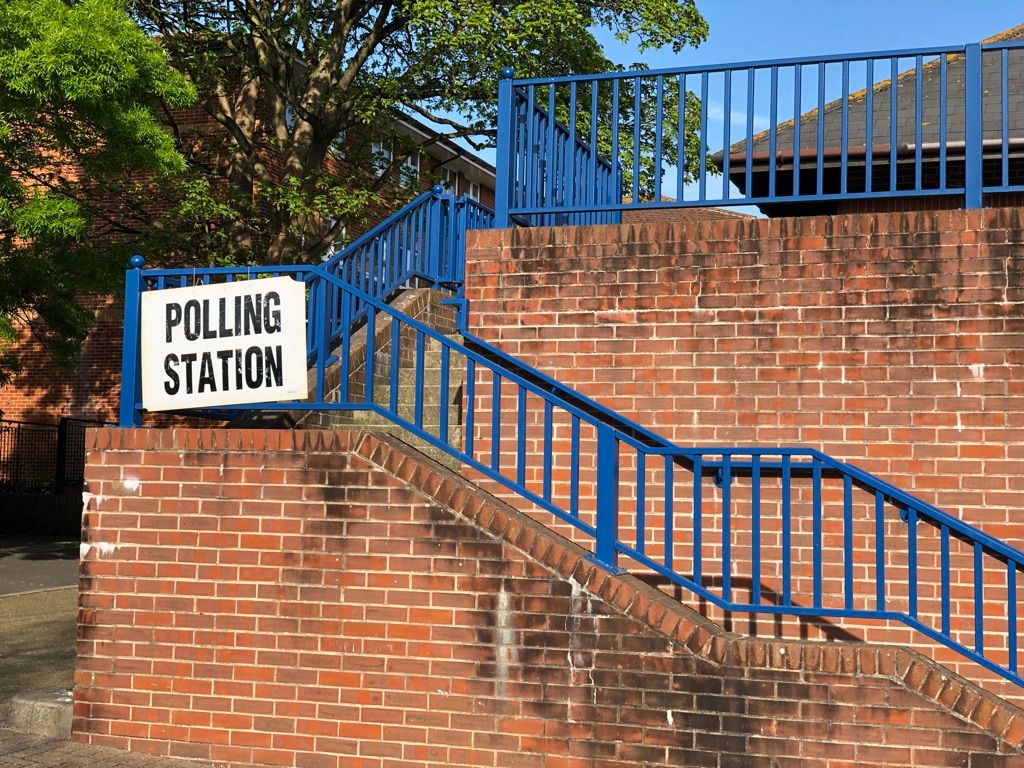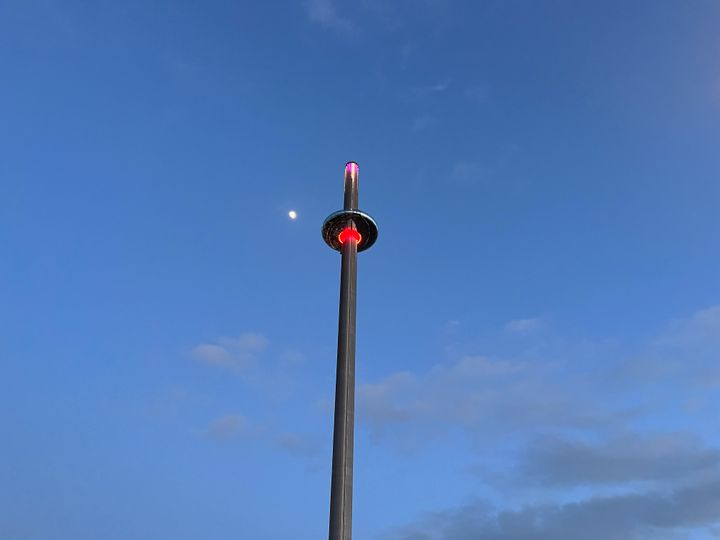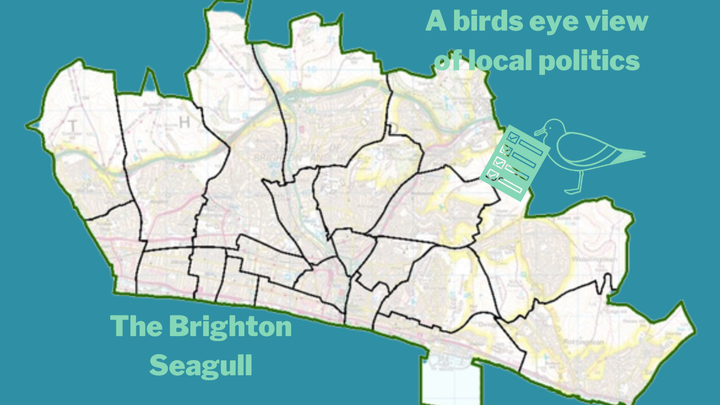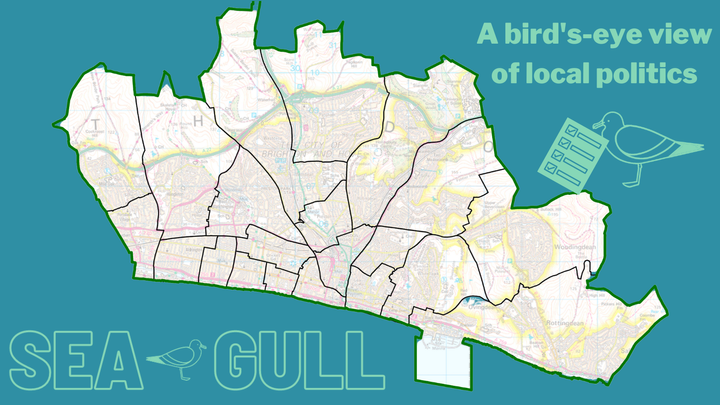Will The 2023 Election End 20 Years Of No Overall Control On Brighton and Hove Council?
What does it mean to have a No Overall Control council, and will we see a return to a majority after this week's council election?

Anyone who's spent a time in the comments sections of Brighton news sites or local history Facebook pages will have encountered people bemoaning the decline of our city—often with reference to the "bloody Green council". They're blamed for everything for the shabbiness of the seafront to the city's large student population. But in fact, Brighton and Hove has never really had a Green council. From 1997 (when Brighton and Hove's respective Borough Councils were merged[1]) to 2003, the council was under Labour control. However, since 2003 the council has been in a state of 'no overall control', with no party holding the 28+ seats, which would allow them to form a majority, and instead the party with the plurality forming a minority administration.
It might sound like a technicality—right now the Greens have the most councillors and a Green councillor is the leader of the council—but the state of minority administration has profound implications for how councillors are able to do their jobs. In systems designed to work under majority rule, the lack of one can cause severe impediment to effective governing. In a council with no overall control, passing legislation and implementing policies can prove to be challenging due to the lack of a solid majority to support decisions. Parties under such circumstances must negotiate—and sometimes give up their initial positions to reach agreements on new projects or policies.
| Years | Minority lead party |
|---|---|
| Labour | 2003-2007 |
| Conservatives | 2007-2011 |
| Green | 2011-2015 |
| Labour | 2015-2020 |
| Green | 2020-present |
This needn't necessarily be an impediment to getting things done—many European countries use some kind of proportional voting system, as do the UK’s regional parliaments. These are designed to lead to non-majority party splits in their legislatures—but they sit within political systems intended to accommodate alliance-forming and dealmaking. For the council, it’s more like a minority national UK government not in coalition—able to pass some basic things but forced to compromise on the rest.
This can mean, over time, that more power ends up in the hands of the council’s officers, the local civil servants whose job it is to implement council policy. Officers provide vital expertise and continuity as elected representatives come and go, but their unelected status does raise questions about democratic accountability when they find themselves in decision-making positions. In the absence of a majority for such a prolonged period, officers may feel more empowered to challenge councillors on their requests, as they may not have the power to follow through.
The combination of minority party rule and increased officer power leads to a less straightforward governing process than a majority-led council would usually experience. Councillors I spoke to seemed very frustrated about the situation—that it stops things getting done and prevents more ambitious plans from being executed.
With the election tomorrow, how likely are we to see this state of affairs change? If any majority is to be achieved, it is going to be by Labour or the Greens—the Conservatives haven't had even a plurality in over a decade, and the rock-bottom approval ratings of the national government seems unlikely to assist them. I’ve been told that Labour are bullish about the potential of achieving a majority, while the Greens seem to think continuing no overall control more likely. Prediction in any election is tricky, and local elections particularly suffer from a lack of polling data. Further compounding this, the local electoral map was re-drawn earlier this year, meaning many ward compositions have changed substantially, and new voter ID requirements may suppress voter turnout, particularly among disadvantaged groups.
The Greens are coming off three years of (minority) administration which have featured several high-profile embarrassments for them, often linked to their previous administration from 2011-15, like 2021’s repeat of the 2013 and 2014 bin strikes and the continuing financial issues of the i360, and their manifesto promise to reduce bin collections has also caused some consternation. Labour have had their own travails with the loss of their majority in 2020 and recent difficulty finding candidates for seats, but could be buoyed by the current popularity of the national party.

This will serve Labour particularly well in currently Conservative wards where they're the strongest challengers. The three wards with the greatest potential to flip Labour look to me to be Wish, Hangleton & Knoll and Woodingdean (which have changed boundaries very little or not at all since the last election). Wish became a Labour/Conservative split after Bella Sankey's substantial by-election victory last year, is also seeing its sitting Tory councillor Robert Nemeth stepping down. Woodingdean and Hangleton & Knoll were both very close-run between Labour and Conservatives in 2019 (Woodingdean in particular, where the highest-polling Labour candidate lost by fewer than 100 votes) with the Greens a distant third.

Labour further seem unlikely to be challenged much in their bastions of North Portslade, South Portslade and a slightly-redistricted Moulescoomb & Bevendean. Westbourne (now with added "& Poets Corner") is likely also a hold—though both Labour councillors are standing down, and the seat saw decent Green performance in 2019—and the new Whitehawk & Marina should be too, being as it is largely formed of the old safely Labour East Brighton ward with the Marina added to the bottom.

Rottingdean & West Saltdean, meanwhile, the rump seat formed by the Marina's removal, is perhaps the most electorally complex ward in the city, home to the notoriously outspoken Bridget Fishleigh, the only independent councillor elected in 2019, who this time has established her own formal grouping, Brighton And Hove Independents, who are standing an additional candidate in the seat. The late Robert McIntosh was able to gain one of the (previously safely Conservative) Rottingdean Coastal seats for Labour in a mid-2022 by-election, while the only remaining Conservative councillor Mary Mears has had to step down due to ill health. I suspect Labour will fail to hold on here, as the areas removed from it in the redistricting were the more left-leaning part of the ward. It will be interesting to see if the Independents can build on their previous gains—Fishleigh was the most popular single candidate in the seat in 2019—or whether the second seat will revert to the Conservatives.

The Greens's fortunes are even more difficult to predict as many of their seats have seen more substantial redistricting—however I think it's safe to presume they'll hold onto their current city centre core seats of Regency (though both councillors there are leaving under somewhat of a cloud, which may not help their new candidates) and Brunswick & Adelaide (largely unchanged) and the new West Hill & North Laine (a subsection of the old St Peters & North Laine ward). The composition of the new Roundhill and Hollingdean & Fiveways wards seem to favour the Greens—with Roundhill combining areas of the old St Peter's & North Laine with areas of the old Preston Park—both Green wards. Hollingdean & Fiveways—where the Greens have been chipping away at Labour's previously solid majority in its former incarnation as Hollingdean & Stanmer (first in 2019 then in a 2021 by-election)—has had an area of the former Preston Park (safely Green) bolted on, so seems likely to go fully Green.

Hanover & Elm Grove has been a Green seat with a strong Labour challenge (occasionally with one Labour councillor), for the last 20 years, a trend which seems set to continue. Queen's Park has flipped back and forth between Labour and Green several times but has been broken up, with the Kemptown coastal strip now budding off into the new Kemptown ward, and Queen's Park adding a little of the old East Brighton ward's west side. These look like close-to-call Labour/Green marginals, as is the largely-unchanged Goldsmid ward in Hove and the new Coldean & Stanmer (formed of the norths of Hollingdean & Stanmer and Moulescoomb & Bevendean).

The Tories, meanwhile, will likely hold on to Patcham & Hollingbury (largely their old safe Patcham ward) but may face stiff competition in Westdene & Hove Park, which combines the old Hove Park (Conservative) with areas of the old Withdean (Green). Outside of that, many of their former redoubts are, as noted, already shaky in the face of (largely Labour) challenges, continuing the clear trend since the early 2000s of slow—though not uninterrupted—Conservative decline in the city—though there's a chance they may be competitive in the new Preston Park ward, which includes part of the current Preston Park (which is Green) and a substantial chunk of the current Withdean (which is Tory).
I'm pretty confident in predicting a bad night[2] for the Conservatives—there's a chance this election could see them dip below 10 councillors—but beyond that, it's difficult to say. Some may be optimistic for a return to a majority administration but if there is it'll be a slim one, and if the Brighton and Hove Independents (or other even more fringe outfits like the Friends of Brighton and Hove or the Lib Dems[3]) pick up any seats it's possible that things could get even more fractured and lead to (in the words of one councillor I spoke to) "complete paralysis". Gun to my head, the most likely outcome seems to me to be continuing No Overall Control but minority control shifting back to Labour—and hey, that's what ChatGPT predicted too. We'll see whether the robot and I called it right when the results are announced on Friday evening.
Adam Englebright runs the data and analytics consultancy Cybersyn and is the Seagull's technical director
Elections were held in 1996 ahead of the unification of Brighton Borough Council and Hove Borough Council into Brighton and Hove Borough Council in 1997, which became Brighton and Hove City Council in 2001 when it was granted city status. ↩︎
well, afternoon—they're not doing an overnight count this year. ↩︎
who are, to be fair, running a sizeable slate of candidates—though I don't think any of them will win. ↩︎




Comments ()